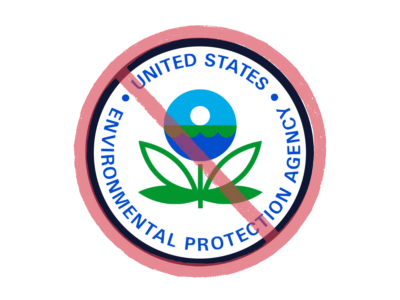DuPont Found Liable In First of 3,500 Lawsuits
Chemical Used in Teflon Linked to Numerous Health Problems, but its Use is Still Legal Under TSCA
Yesterday, a jury in the Southern District of Ohio found DuPont liable for a woman’s kidney cancer in the first of 3,500 suits the company faces. The cases all stem from DuPont’s use and disposal of perflourooctanoic acid (PFOA) or C8. The chemical is used to make Teflon, among other things, and the most recent available data from the CDC suggests over 99% of Americans have detectable levels of C8 in our blood.
DuPont used, and ultimately manufactured C8 at its Parkersburg, West Virginia Washington Works plant for decades. Despite evidence dating back to the 1950s that C8 caused a wide range of health problems, DuPont continued using the compound and regularly dumped it into the Ohio River watershed. It’s a sordid tale, and plaintiffs eventually gained access to decades of evidence of corporate cover ups and increasingly concerning toxicology results. It’s a captivating story ably told in this investigative report from the Huffington Post.
The jury found DuPont responsible for negligence and infliction of emotional distress, but found DuPont didn’t act with actual malice, allowing it to avoid punitive damages. DuPont spin off Chemours will bear all liability associated with the case. Chemour’s stock value has dropped by over 50% since it started trading as a separate entity in mid-June. The next trial is scheduled to start Dec. 1, and most legal experts expect the company to move forward with a few cases before settling the bulk of the outstanding suits. Chemours/DuPont have said they will appeal the $1.6 million verdict.
A large scale epidemiological study funded by a previous DuPont settlement related to C8 releases from the Washington Works plant has linked the chemical to a number of diseases. Other studies of workers, who usually have much higher exposure, link the chemical to birth defects and prostate cancer, among other maladies. Yet at trial DuPont argued that C8 was safe because it isn’t regulated and isn’t on the EPA’s National Primary Drinking Water Regulations list of contaminants. A DuPont lawyer told the jury, “there are no laws restricting the use of [C8] . . . . It could be legally washed down the drain, like the dish soap we use at home and wash down the drain every day.”
He was right; there are no laws restricting the use of C8. The compound was grandfathered in under the Toxic Substances Control Act (TSCA) of 1976, and EPA has made no move to restrict its use. In 2006, EPA began a voluntary phase out program with the top C8 manufacturers. DuPont is participating in that program. However, concerns have recently been raised about the safety of other perflourinated compounds that are often being used as replacements. Under TSCA, the safety of the replacement compounds does not need to be proven before they are approved for use. TSCA reform stalled in the Senate yet again this week, despite broad bipartisan support.
Ultimately, it’s worth remembering that the other 3,500 lawsuits are really 3,500 people, a point brought home eloquently in HuffPo’s in depth profile of people affected by DuPont’s actions. Reading it reminds us all of what is at stake.
Reader Comments
2 Replies to “DuPont Found Liable In First of 3,500 Lawsuits”
Comments are closed.







Combine junk science with reckless use of tort law, throw in technically pretentious lawyers and judges, add a panel of naive jurors, and you get an absurd result.
But not justice.
Toxic tort law is a hoax, and is just another example of the many problems that can’t be solved through the law,
But some people can get rich trying. It is also a useful political tool. Destructive, but useful.
A point of clarification based on a comment received from a colleague: the plaintiff’s exposure to C8 was based on her consumption of water contaminated by the Washington Works plant, not on occupational exposure or exposure from the use of Teflon-coated cookware.
With respect to the quality of science used to link the plaintiff’s kidney cancer and C8, I’d recommend readers who are interested follow the link provided above to the large scale epidemiological study. The study assessed whether C8 could cause a variety of maladies, and ultimately linked the chemical to six illnesses, including kidney cancer. The related peer reviewed scientific studies are also available at that link. DuPont was precluded from arguing that C8 doesn’t cause kidney cancer based on the findings of that study, which was funded by a previous C8 settlement DuPont reached. They did argue that the C8 exposure didn’t cause the plaintiff’s kidney cancer, although the jury found that argument unpersuasive.